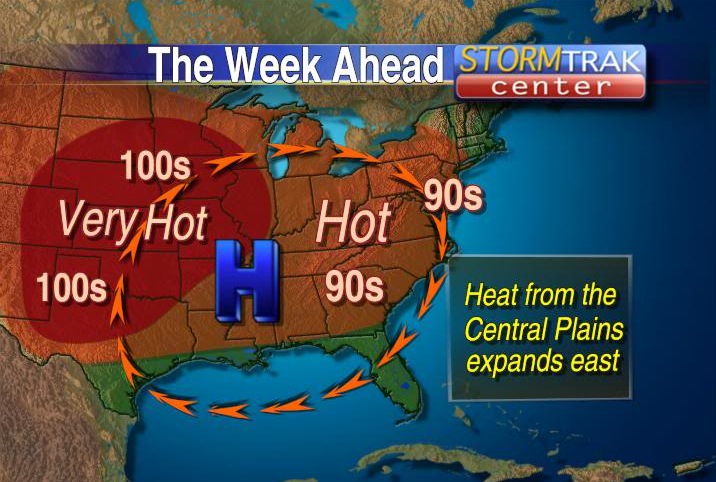As June comes to a close, the summer is now in full-swing. We see the days getting longer, drier and hotter as July gets closer and closer. We’ve had a few high-temperature days, but we know that there are still hotter days to come. Now, more than ever, we need to pay attention to the negative effects extreme heat can have on those who work outdoors.
2012 was the warmest year on record for the country according to the National Oceanic and Atmospheric Administration (NOAA). In fact, it was 3.2 degrees Fahrenheit above average. The Southern states, who are no stranger to hot weather, are even feeling the heat’s brutal impacts.
Texas, in particular, has been faced with very extreme weather. As of now, the state is currently battling a multi-year drought and ninety-five percent of the state is in some level of drought. If that weren’t enough, five billion-dollar weather disasters hit Texas in 2012 including damaging hail, tornadoes, and high winds. Most of these instances of extreme weather are a result of the La Nina weather pattern which often causes warmer temperatures, especially in the winter.
As a result of climbing temperatures and the health risks they bring, the state of California has published a heat illness prevention standard that goes beyond federal OSHA voluntary guidelines. This standard went into effect in 2010 and it applies to all outdoor places of employment with additional requirements that must be met in certain industries.
The standard requires California employers to take four steps. First, they must train all employees and supervisors about heat illness prevention. Second, fresh drinking water must be provided so that each employee can drink at least 1 quart per hour. Employees must also be encouraged to do so. Third, they must provide access to shade and encourage employees to rest and cool down in the shade for at least five minutes. This rest should occur before the employee begins to feel sick. Last, they must develop and implement written procedures for complying with the Cal/OSHA Heat Illness Prevention Standard.
Knowing the risk factors for heat illness is essential for anyone working outdoors in the heat. Awareness of the air temperature, relative humidity, radiant heat from the sun and other sources is extremely important. In addition, the workload severity and duration, protective clothing and PPE worn by workers must also be taken into consideration. Depending on these factors, employees may find the need to take more cool-down breaks or consume more water. There are also various cooling products that can be used to help regulate your temperature in extreme heat conditions. Supervisors should use thermometers on the worksite so the temperature can always be monitored.
We are not safe from heat illness even in Indiana. Temperatures can soar into the nineties and humidity can skyrocket. For equipment to help you beat the heat such as water bottles, cooling bandanas and cooling hard hat liners, visit WorkingPerson.com.




